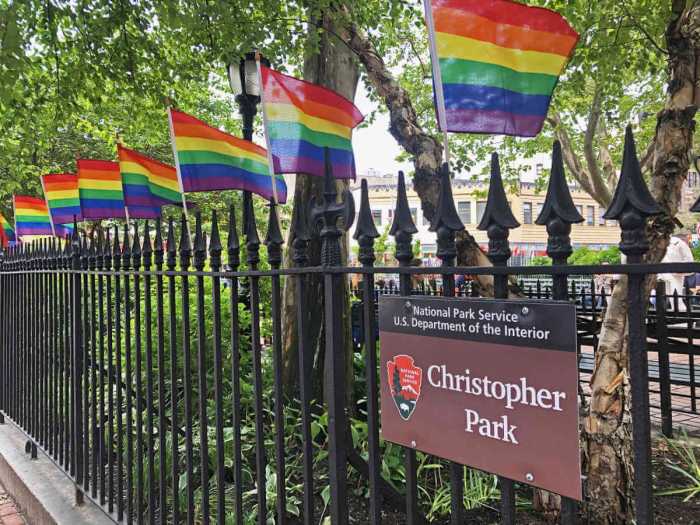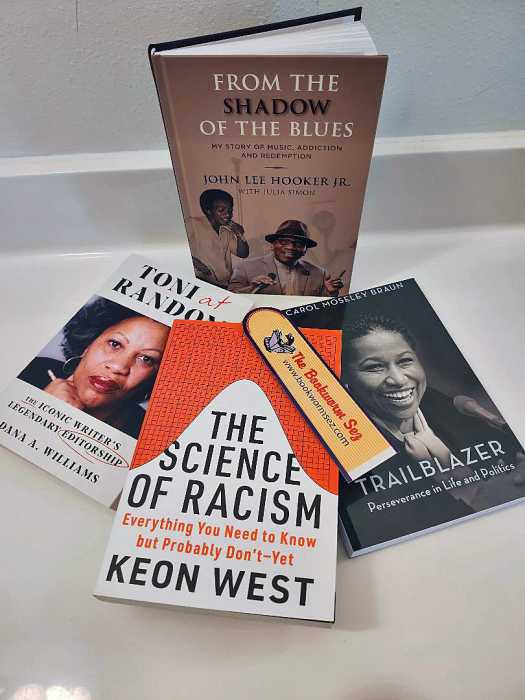The 2005 Centers for Disease Control and Prevention National HIV Prevention Conference held in Atlanta in June should be a wake-up call for black gay men —and anyone else serious about bringing the HIV epidemic under control in the United States.
Data for 2004-2005 CDC’s National Behavioral Surveillance System reported shocking rates of HIV infection among black men who have sex with men—a category that includes a wide-array of self-identifications, usually dubbed MSM—that rival those seen in many African nations.
In five cities where MSMs were targeted for HIV testing—Atlanta, Los Angeles, Miami, New York and San Francisco—46 percent of black gay men were HIV-positive, compared to 21 percent of white gay men. The study also founded high rates of undiagnosed HIV infection, with 67 percent of black gay men unaware of their status, compared to just 18 percent of white gay men.
This data, along with mounting evidence from studies dating back years, led the CDC to declare the HIV epidemic squarely situated among black MSMs. None of the studies show any evidence to suggest that black, gay men engage in riskier sexual behaviors than their white counterparts. Why then are black, gay men being hit harder by HIV?
Various explanations for the HIV epidemic’s disproportionate impact among black, gay men have been advanced over the years. In the early to mid-1990s, black, gay men involved in HIV work began to argue that traditional AIDS service organizations—white, gay ones—were not effective in reaching black, gay men. Organizations like Gay Men’s Health Crisis were pitted against black “owned and operated” entities such as Gay Men of African Descent, while the latter organizations pressured federal, state and local governments to make more resources available to black, gay community-based organizations, or CBOs.
Today, however, most of the traditional AIDS service organizations in urban centers with large populations of black, gay men have diversified their client caseloads and have taken steps to make their HIV prevention strategies more relevant to black MSMs. Meanwhile, funding organizations, in government and the private sector, took steps to develop the capacity of black gay CBOs to deliver effective prevention services. These initiatives reached a high water mark when the Congressional Black Caucus in 1998 successfully pressed for the Minority AIDS Initiative that made resources available for prevention and treatment expansion and capacity development in minority communities.
Despite these efforts, are we doing enough to support CBOs that strive to prevent new HIV infections among black MSMs ?
Many would say no.
Another explanation is the paucity of effective prevention strategies and interventions designed for black MSMs. Indeed, research targeted to black MSM—to develop interventions, assess the precursors to risk behaviors or evaluate the effectiveness of interventions—remains scarce. CDC’s list of evidence-based interventions that CBOs and health departments are allowed to use contains no interventions specifically designed for black MSMs. Still to this day, only one HIV prevention intervention aimed at changing behavior toward safer sex practices specifically designed for black gay men has undergone a randomly controlled trial to evaluate its effectiveness. Developed in the early 1990s by Georgia State University psychology professor John Peterson, this approach is considered outdated by some. However, Peterson’s work demonstrated that group level interventions can change black, gay men’s behavior and called attention to the importance of addressing psychosocial factors in trying to do so.
In the absence of HIV prevention strategies specifically designed for black MSMs, existing interventions proven effective for white, gay men can be adapted and tailored. Many Men, Many Voices, an adaptation of an intervention developed by Jeff Kelley of the University of Wisconsin, is one such promising example. Brooklyn’s People of Color in Crisis and the University of Rochester adapted the intervention to take into account the cultural factors that confront black, gay men. CDC now encourages its directly-funded CBOs to use this curriculum.
Social and economic factors such as poverty, unemployment, racism and lack of access to care are issues that affect the health and well being of black gay men. Similarly, the lack of cultural competency among health care and social service providers is a serious barrier to access to and retention in care for black MSMs. In 2002, a groundbreaking report, “Unequal Treatment,” from the National Academy of Science’s Institute of Medicine concluded that minorities are more likely to receive lower quality health care than whites, even when income levels and health insurance status are comparable. Bias, prejudice, and stereotyping on the part of health-care providers were cited as potential contributors to these differences. If such discrimination is an issue for heterosexual people of color, imagine the impact of racism and homophobia on the quality of HIV testing, care and treatment black gay men are able to access.
This weekend’s Black Gay Pride in the City celebration appropriately includes opportunities for black MSMs to access HIV testing in a setting that they might find more welcoming. Funders should commit more resources to replicate and evaluate this approach at more than 20 annual black gay pride celebrations across the country.
Stigma associated with AIDS and homosexuality in the African-American community also plays a part. Black America responded slowly to the HIV crisis in the early years of the epidemic because the community considered AIDS a white gay men’s disease. Even though almost 50 percent of HIV cases diagnosed from 2001 through 2003 in the U.S. occurred among African Americans, the black community has not galvanized its energies and resources sufficiently enough to combat the real threat of the epidemic. Black community leaders and institutions must work with black gay male leaders to finally find ways to gain greater acceptance of homosexual lifestyles. As long as some black men cannot openly express their same sex desires, many will continue to live their lives in secrecy and potentially place themselves and their sex partners at risk.
Is it possible that black MSMs are more susceptible to HIV infection because of environmental or biological factors? Can stress caused from dealing with racism and homophobia affect health and wellness, thereby making black gay men more likely to become infected with HIV or become sicker sooner? Dr. David Malebranche, a medical doctor and researcher at Atlanta’s Emory University, who will keynote at this week’s 2005 Black Gay Research Summit in Brooklyn, has speculated on these issues and considers them valid areas for future research. The summit will bring together a diverse group of researchers and advocates to share information about research being conducted by black gay men on behalf of their community. Research must ultimately be connected to program development, quality improvement and policy action.
A lunch panel—with national advocates Ernest Hopkins, director of federal affairs at the San Francisco AIDS Foundation, Mark McLaurin, director of federal affairs at the New York AIDS Coalition and this author—will seek to do just that by highlighting recent community mobilization efforts in response to the new CDC data.
Since the June CDC conference, a group of black gay activists began meetings to develop a collective, community-driven response. The group has produced a policy document with nine action steps targeted to the federal government and community stakeholders. This statement follows a similar 2003 effort, when a group of black gay and bisexual activists, many of whom had longstanding disagreements in the past, signed a letter to then Secretary of Health and Human Services Tommy Thompson calling for action steps including demonstration projects, more behavioral research and a national social marketing campaign. Black, gay men and their allies must continue to demand decisive action from national policymakers.
CDC’s national HIV prevention strategy emphasizes the need to identify and assist those living with the virus through testing, linking individuals to care and targeting prevention strategies to HIV-positive individuals. The Bush administration’s recently announced priorities for reauthorization of the Ryan White Care Act reflect these principals also. It’s about testing and treating. Everyone agrees that early diagnosis of HIV infection is critical. But HIV testing is a diagnostic tool, detecting infection. It does not prevent an individual from becoming infected. We are intervening too late if we rely on HIV testing only.
Black, gay men stand at the crossroads of the domestic HIV epidemic. Our nation needs a comprehensive response across all sectors—government, national AIDS policy organizations and local CBOs, physicians and state and local health departments—to reverse the devastating HIV infection trends among black, gay men. A comprehensive HIV prevention and care program for black, gay men should include strategies that step in to mitigate those factors that are precursors to risk behaviors and that facilitate ongoing access to care. To be effective, these programs must take into account psychosocial issues such as depression, childhood sexual abuse, partner violence, alcohol and substance use and the effects of discrimination based on race and sexual orientation. Holistic approaches that go beyond just HIV and include screening and treatment for other STDs, hepatitis A and B vaccination, mental health services and substance use treatment will be part of a broader health and wellness program for this community.
Leo Rennie is a consultant and activist who lives and works in Washington, D.C. His e-mail address is lrennie@rcn.com.
gaycitynews.com


































